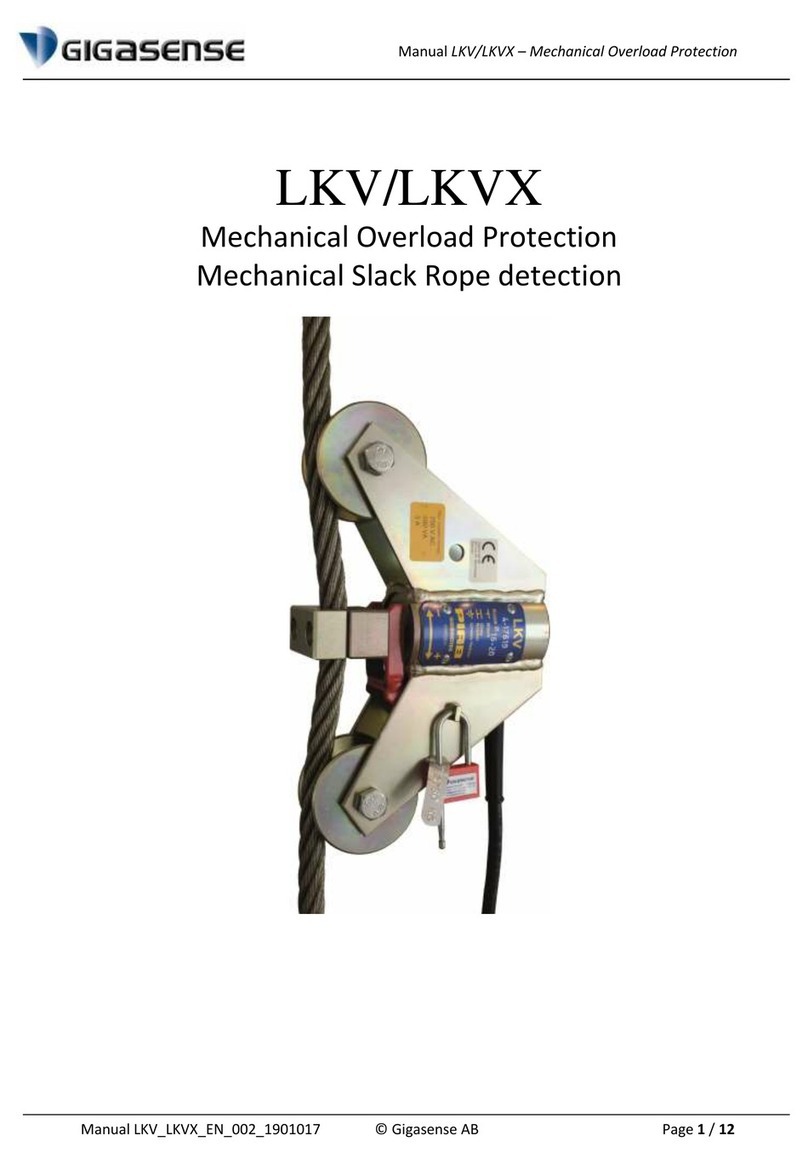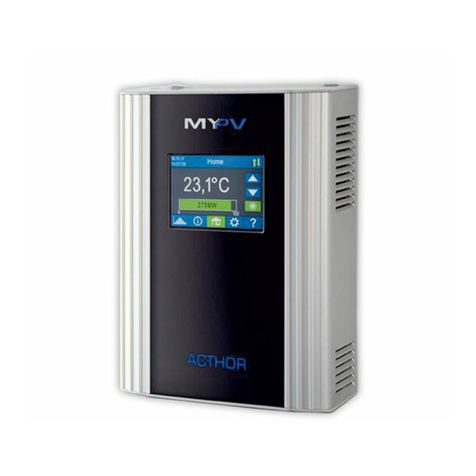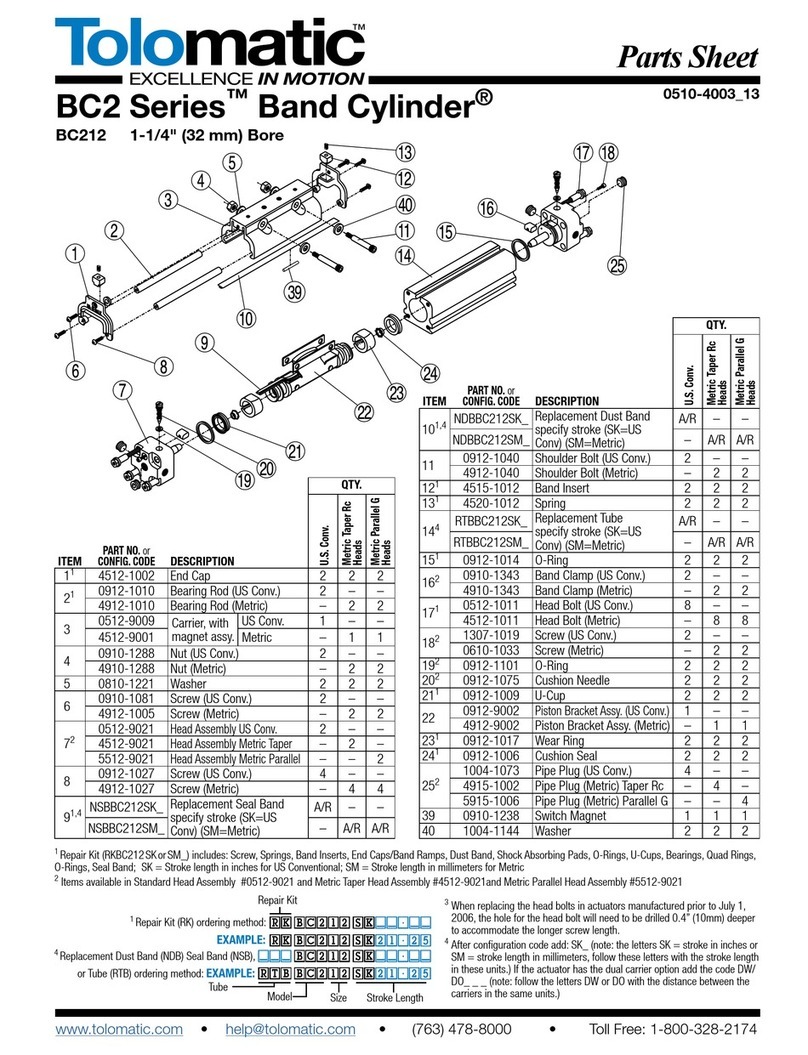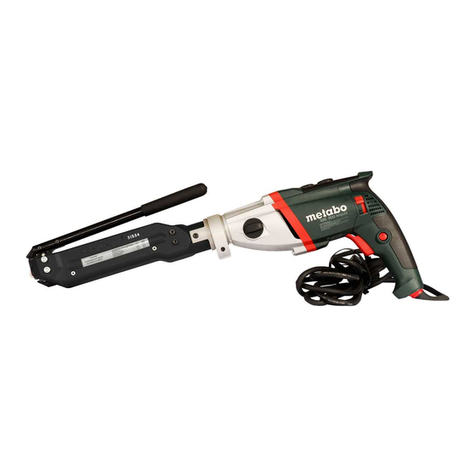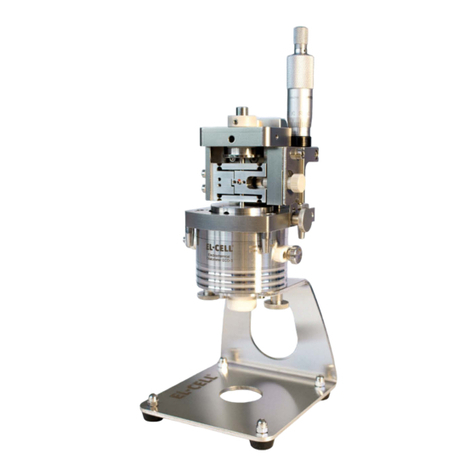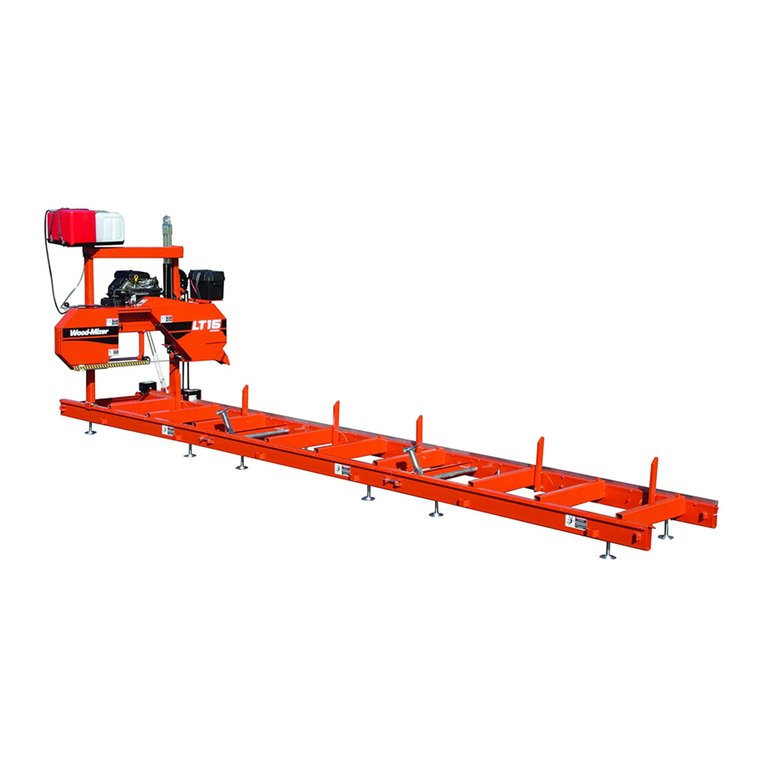Gigasense II User manual

User manual GII Anti-Collision System
GIIMAN_US_CA_000_2021-06-15.docx © Gigasense AB Page 2 / 42
SYMBOLS USED
The following symbols are used throughout this documentation, and/or marked on the product:
CAUTION. This symbol on the equipment indicates that the manual must be consulted.
In this manual it appears before instructions, which if not followed, may result in
product damage or improper function.
CE-mark. Indicates that we as a manufacturer declare that this product is in conformity
with all relevant CE-marking Directives.
Class 2 alert sign. Radio equipment is subject to restrictions of use.
Caution, risk of electric shock.
Direct current.
Class 3 equipment.
Follow local regulations regarding recycling at disposal of this product. This product
must be disposed of separately, and not with normal household waste. See separate
section in this manual.
To ensure safe operation, this manual, together with applicable local user industry’s safety rules and
regulations must be followed. It is also essential to follow the applicable country law, safety
regulations and directives relevant for the use of this product.
Warranty is not valid if any sealed screws are adjusted, or if any other modifications not described in
this manual are made.
SOFTWARE
Gigasense continuously improves and optimizes the GII system, therefore upgrades and updates of
the software will be necessary. In the event of necessary upgrades and updates, it is the end users´
responsibility to ensure that the upgrades and updates are carried out.
Revision history:
Rev 000_2021-06-14:
First edition
SYMBOLS USED........................................................................................................................................ 2

User manual GII Anti-Collision System
GIIMAN_US_CA_000_2021-06-15.docx © Gigasense AB Page 3 / 42
SOFTWARE............................................................................................................................................... 2
GENERAL –INTENDED USE...................................................................................................................... 4
CONSTRUCTION....................................................................................................................................... 5
SAFETY INFORMATION AND WARNINGS ................................................................................................ 5
SPECIFICATIONS....................................................................................................................................... 7
SAFETY & ENVIRONMENT........................................................................................................................ 8
FUNCTION –two moving cranes ............................................................................................................. 8
FUNCTION –one moving crane............................................................................................................. 11
INSTALLATION ....................................................................................................................................... 12
INSTALLATION - ALIGNMENT PROCEDURE ........................................................................................... 15
INSTALLATON - WIRING......................................................................................................................... 19
INSTALLATON - POWER SUPPLY............................................................................................................ 21
OPTIONAL - POWER BANK BACKUP OF THE MODULATED SIGNAL....................................................... 23
INSTALLATON - CONNECTIONS OF THE ANTENNA BOX........................................................................ 24
INSTALLATON - CONNECTIONS OF THE RELAY BOX.............................................................................. 25
PUSH BUTTONS ..................................................................................................................................... 26
MENU STRUCTURE ................................................................................................................................ 26
ADJUSTMENTS & TEST OF PERFORMANCE ........................................................................................... 34
MAINTENANCE ...................................................................................................................................... 34
TROUBLESHOOTING .............................................................................................................................. 35
IDENTIFICATION & SPARE PARTS .......................................................................................................... 38
REPLACEMENT OF PARTS & DISPOSAL.................................................................................................. 40
RECOMMENDED SPARE PARTS ............................................................................................................. 40
HIGH RISK APPLICATIONS...................................................................................................................... 41
MTTFd and DIAGNOSTIC COVERAGE..................................................................................................... 42
CE-CERTIFICATION................................................................................................................................. 42
FCC and IC-CERTIFICATION.................................................................................................................... 42
CONTACT ............................................................................................................................................... 42
Appendix 1: Frequency data and working range –Countries
Appendix 2: WARNING - MAINS SUPPLY

User manual GII Anti-Collision System
GIIMAN_US_CA_000_2021-06-15.docx © Gigasense AB Page 4 / 42
GENERAL –INTENDED USE
GIGASENSE II is an Anti-Collision System designed for Overhead Travelling (EOT) cranes or
other machinery running on a common set of rails.
In the most common case, where two EOT-cranes on the same track both need to be
protected from collision, two units are needed. When the crane should be protected from
running into a wall or track end, one complete unit (antenna and relay box) in combination
with one unit consisting of only the antenna and power supply (no relay box is needed) is
required.
The antenna is mounted with the center axis in the direction of movement, always pointing
towards the opposite antenna. The relay box is mounted apart from the antenna, normally
nearby the crane control functions.
Each unit works according to the SFCW (Stepped Frequency Continuous Wave) radar
principle, sensing the relative speed and distance to the reflecting transponder in the
opposite antenna. By using a modulated “fingerprint” reflection in the opposite antenna, the
system is not disturbed by undesired echoes from surfaces on the crane and other metal
parts.
The antenna is powered by the relay box and data from the antenna is continuously
received, every 128ms. The relay box has three potential free relay contact outputs which
are controlled by Limit 1 and Limit 2 for braking and stopping the crane movement. One
output relay is used for internal fault monitoring. The relays are held active by the
electronics and any exceeded limit or alarm of the function will make them trigger. Settings
and readout of parameters are easily accessible via a display and push buttons in the relay
box.
The internal fault monitoring is performed continuously. If the opposite unit has been turned
off or has a power failure, the modulated reflection remains active. This is because each
antenna has a backup receiver (rechargeable supercapacitor) for the modulating fingerprint
reflection and will continue to work for about 6-12 hours (depending on the temperature).
When the backup receiver has unloaded in a unit, the opposite unit still senses a signal from
the beam or other metal parts of the crane, which triggers an alarm to stop the movement
of the crane. For correct detection of this function, it is necessary to have a surface of metal
with minimum 1 m² behind the antennas.
GIGASENSE II contains a Microwave transmitter. Although it has very low output power, this
system must conform to the local regulations set up by the Telecom Authority in the user
country. This equipment operates in the 9.9- 10.6 GHz frequency bands. See appendix 1 for
detailed information.

User manual GII Anti-Collision System
GIIMAN_US_CA_000_2021-06-15.docx © Gigasense AB Page 5 / 42
CONSTRUCTION
The antenna is made of cast, stove-enameled Aluminum which can be separated into two
parts, the Reflector, and the Antenna box (IP56).
The relay box contains a micro controller, output relays, terminal connections, display and
push buttons. The housing is an IP66/67 standard polycarbonate enclosure. The terminal
blocks have easy access by pushing a screwdriver to connect the wires.
SAFETY INFORMATION AND WARNINGS
VERY IMPORTANT:
THE ANTI-COLLISION SYSTEM GII UNIT A AND UNIT B MUST ALWAYS HAVE THE POWER TURNED
ON, EVEN IF THE CRANE POWER IS SHUT OFF.
LIMIT 1 AND LIMIT 2 WILL ONLY WORK IF THE UNIT A AND UNIT B ARE POWERED ON, THE BACKUP
SUPER CAPACITOR IS ONLY INTENDED TO WORK FOR SHORT POWER FAILURES.
CONNECT MAINS SUPPLY OF THE ANTI-COLLISION SYSTEM GII BEFORE THE MAIN CONTACT ON THE
CRANE.
Important: One Antenna A-unit must always work with an Antenna B-unit.
The relay boxes can be used with either A-units or B-units.
Caution: Changes or modifications not expressly approved by the party responsible for
compliance could void the user's authority to operate this equipment.
FCC statements:
This device complies with part 15 of the FCC Rules. Operation is subject to the following
two conditions: (1) This device may not cause harmful interference, and (2) this device
must accept any interference received, including interference that may cause undesired
operation.”
IC Statements:
Reflector
Relay box
Antenna box

User manual GII Anti-Collision System
GIIMAN_US_CA_000_2021-06-15.docx © Gigasense AB Page 6 / 42
This device complies with Industry Canada licence-exempt RSS standard(s). Operation is
subject to the following two conditions: (1) this device may not cause interference, and (2)
this device must accept any interference, including interference that may cause undesired
operation of the device.
Le présent appareil est conforme aux CNR d'Industrie Canada applicables aux appareils
radio exempts de licence. L'exploitation est autorisée aux deux conditions suivantes : (1)
l'appareil ne doit pas produire de brouillage, et (2) l'utilisateur de l'appareil doit accepter
tout brouillage radioélectrique subi, même si le brouillage est susceptible d'en
compromettre le fonctionnement
•Pay attention to turn off all power before opening the antenna and relay unit.
In some certain cases described in this manual, it is allowed to have the lid open
while the system is working, but connections to the relays MUST be isolated or
disconnected from hazardous voltage!
•It is only allowed to open the units in a controlled environment, for example during
installation and maintenance. A controlled environment is when temperature is
between 5° and 40°C, and max. relative humidity is 80% (up to 31°C, decreasing
linearly to 50% at 40°C).
•Turn off all power if any work is to be done on the system. The GIGASENSE II is
powered with 24VDC.
•Electrostatic discharge (ESD): be careful when opening the lids of the antenna box
and the relay box.
•Microwave radiation: Within 5cm of the antenna output, the power density of the
microwave radiation may exceed 10W/m2but is never more than 20 W/m2.
•Safety mechanisms must not be bypassed without evaluation of the risk assessment.
•Supplementary protective measures may be required based on the risk assessments
for the application.
•If the system is operated in conjunction with other components, the corresponding
user information must be followed.
•All external connections from this system must only be made to Class III.
equipment/circuits. Only the relays are allowed for connections up to 250VAC.
•The installation of the system must be performed by authorized technical personnel.
•The system must be taken out of operation in the event of damage.
•The personnel who work, install, and operate the system are responsible for
understanding the function and installation prescriptions described in this manual. If
any questions or uncertainties occur, Gigasense AB must be informed before the
system is put in operation.
•A correct assembly and alignment of the system is essential for the correct operation
of the system.
•A correct function must be verified before the system is put in normal operation.
•The lids of the antenna box and the relay box must not be opened during operation.
When adjusting, testing performance or logging data from the RS232 output, it is
allowed to run the system without the lid of the relay box. No hazardous Voltage
connections to the relays are allowed!

User manual GII Anti-Collision System
GIIMAN_US_CA_000_2021-06-15.docx © Gigasense AB Page 7 / 42
•If this equipment is used in a manner not specified in this manual, or by Gigasense AB
personnel, protection or function normally provided by this equipment may be
reduced.
•The analogue 4-20 mA output must not be used for decisions such as braking and
stopping the crane. The analogue output is only intended for indication such as
distance display via a remote display.
SPECIFICATIONS
•Type designation: GII.
•Alarm limits' distance: 2 - 40m, the maximum working range varies for different
frequencies from 25m to 50m due to restricted output power (EIRP, see appendix 1.
•Accuracy of limits: +/- 1m. To achieve 1 m accuracy for different speeds, the function
SPD (Speed compensation) can be necessary to use.
•Sample frequency of the SFCW radar measurement: 128 ms.
•Speed range: 0.05 - 5 m/s relative speed between the cranes.
•Speed dependence: The alarm limits can be compensated (20 - 1500%) according to
different speeds. Minimum value is 10%.
•Relay outputs: 3 switching potential free relay contacts (max. load 250VAC / 8 A).
The Relay outputs are used for braking and stopping the crane movement and
correspond to the alarm limits, Limit 1 and Limit 2. The third relay output is used for
the failure alarm.
•The Limit 1 output relay can be given a pulsing function suitable for a warning lamp.
•Analogue output 4-20 mA: for example, a remote display, corresponding to the
distance between the units. 4 mA = 2 m and 20 mA = 40 m (maximum range, see
appendix 1). Normal load 250 Ohms. The output must not be used for decisions.
•Supply Voltage complete system: 24 VDC.
•Supply Voltage antenna box (should be powered via relay unit): 12 VDC.
•Supply Voltage Transponder unit: 12 VDC.
•Power consumption Antenna/Transponder unit: 200 mA.
•Power consumption Relay box: 100mA.
•Permitted ambient temperature: -25 ... +70 °C.
•Degree of protection: IP66/67 (Relay unit), IP56 (Antenna unit).
•Relative humidity: 10 to 80% (no condensation).
•Max. altitude: 2000 m.
•Transmitter frequency: 9.9 ... 10.6 GHz, see appendix 1.
•Radiated power defined as EIRP, see appendix 1.
•SFCW (Stepped Frequency Continuous Wave), see appendix 1.
•Dimension’s antenna (H x W x D) 443 x 359 x 294 mm & weight 4.0 kg.
•Relay box (H x W x D) 175 x 125 x 75 mm 0.8 kg.
•GROSS WEIGHT/DIMENSION: 1 system incl. packing (Unit A + Unit B) =
12.5 kg / 370 x 370 x 330 mm.

User manual GII Anti-Collision System
GIIMAN_US_CA_000_2021-06-15.docx © Gigasense AB Page 8 / 42
Options:
•Parameter setting program, to set parameters and download/upload parameters via
a PC. Cable with Molex RS232 connection required.
•Power supply box 100- 240 VAC (or other required voltages).
•Transponder Unit A or Unit B (crane to be protected from track end or wall).
The Transponder Unit works against an active unit with relay box.
•Power bank backup of the modulated “fingerprint” reflection.
•Supplied cable pre-connected in the antenna box (max. 30m), ordered per meter.
SAFETY & ENVIRONMENT
•Protects property and production.
•Designed to work in the toughest conditions such as in steel works, harbors, mines
etc.
•Fail Safe operation thanks to supervision of function, both in antenna box and relay
box. The antenna unit is supervised by a watchdog. The relay box automatically puts
the system in failure mode (all three relays in alarm position) if data is not received
from the antenna box.
•The signal is very hard to disturb, the A- and B- units use different frequencies,
different polarization of the Microwaves and a "fingerprint" radar reflection. The
"fingerprint" radar reflection function has a backup super capacitor in case of short
power failures.
•The Anti-Collision System is not disturbed by rain, dust/metal particles, fog, or
sunlight.
FUNCTION –two moving cranes
By using SFCW (Stepped Frequency Continuous Wave) radar technique, the distance and
relative speed are calculated.
The modulated (fingerprint) reflection to the opposite unit is made by a diode in the
microwave head. The diode oscillate with 16 kHz. As long as the diode oscillates, the
opposite unit recognize the unit.
NOTICE! The maximum range is given as 40 m in the illustrations below. The range varies for
different frequencies from 20 m to 50 m due to limited allowable output power (EIRP), see
appendix 1.
The range is the distance between the Unit A and the Unit B, when the units having contact
(signal) with each other. The limit 1 and limit 2 can be set in this range.
If the distance between the Unit A and Unit B is longer than the range, the system “waits“
for the signal from the opposite unit, therefore the distance between the Unit A and Unit B
can be much longer than the range.
Principle of the modulated signal (fingerprint) reflection in the Gigasense II system:

User manual GII Anti-Collision System
GIIMAN_US_CA_000_2021-06-15.docx © Gigasense AB Page 9 / 42
Figure 1A. Unit A transmits an unmodulated Microwave signal to Unit B.
Figure 1B. Unit B modulates the Microwave signal and Unit A receives the modulated
reflection. The modulated (fingerprint) reflection to the active unit is made by a diode in the
microwave head in the opposite unit. The diode oscillate with 16 kHz. As long as the diode
oscillates, the opposite active unit recognize the unit.
Figure 2A. Unit B transmits an unmodulated Microwave signal to Unit A.
Figure 2B. Unit A modulates the Microwave signal and Unit B receives the modulated
reflection.
The Unit A and Unit B work independently of each other and continuously transmit their
respective signals. When the units are in range for the modulated reflection, the Limit 1 and
Limit 2 will activate at preset alarm limits.

User manual GII Anti-Collision System
GIIMAN_US_CA_000_2021-06-15.docx © Gigasense AB Page 10 / 42
Principle of the unmodulated signal reflection in the Gigasense II system:
Figure 3A. Unit A (or Unit B) transmits an unmodulated Microwave signal towards the
unidentified object.
Figure 3B. The Microwave signal is reflected unmodulated by the unidentified object and
received in the Unit A (or Unit B) where it triggers an alarm.
Unmodulated signal reflection can occur when an identified object is suddenly detected in
front of the antenna, if one unit (A or B) malfunctions or if unit (A or B) has power failure
(the super capacitor is discharged after approx. 6-12 hours)
DISTANCES OVER 40 METERS
(see appendix 1 for working range details)
Figure 4. If the distance between unit A and unit B is over 40 meters and no unidentified
object is present, unit A and unit B is in NO alarm state.

User manual GII Anti-Collision System
GIIMAN_US_CA_000_2021-06-15.docx © Gigasense AB Page 11 / 42
FUNCTION –one moving crane
If there is only one moving crane to be protected from running into a wall or a track end, the
configuration with one complete unit A and one transponder unit B can be used. The
modulated (fingerprint) reflection to the active unit is made by a diode in the transponder
microwave head. The diode oscillate with 16 kHz. As long as the diode oscillates, the
opposite active unit recognize the unit.
Figure 5A. Unit A is a complete system with relay box. Unit A transmits an unmodulated
Microwave signal to Transponder Unit B (no relay box needed).
Figure 5B. Transponder Unit B (without relay box) modulates the Microwave signal, Unit A
receives the modulated reflection.
When unit A is in the range for the modulated reflection, Limit 1 and Limit 2 will activate at
preset limits.
Antenna box Transponder box

User manual GII Anti-Collision System
GIIMAN_US_CA_000_2021-06-15.docx © Gigasense AB Page 12 / 42
INSTALLATION
The location and alignment of the antennas is important, the location of the Relay boxes is
not critical. The antennas must be placed opposite of each other. The reflector has three
fitting holes suited for 8 mm bolts (not included in delivery).
A good location is often the barrier of a platform or a ladder, the barrier of the girder etc.
provided that they are rigid and not resonant when the crane moves.
If the crane has the ground/earth terminated to the crane construction, the GII antenna
(reflector) shall be isolated by rubber bumps or equal, when fixed with the three bolts in
the crane.
For correct detection of the unmodulated signal reflection (in case of error in one unit), it
is necessary to have a surface of metal with minimum 1 m² behind the antennas. A plate of
1 m² or larger can be installed behind the antennas, if the location of the installation do
not have enough surface of metal behind the antennas. See figure below.

User manual GII Anti-Collision System
GIIMAN_US_CA_000_2021-06-15.docx © Gigasense AB Page 13 / 42
To have easy access to the antenna box is also recommended.
The antennas are to be mounted with their main-beam axis parallel to the crane travelling
direction, and free from other fixed or moving objects within a radius of 1,5 m from the
main-beam axis center.
The moving trolley or trolley cables must not cross the antenna beam.
1,5 m free space around the antennas is necessary, both at the location for installation and
along the crane travelling track, to get correct transmitting/receiving of the microwaves.
See figure below.
It is suitable to have the cranes close to each other when installing the antennas. To adjust
the alignment of the antennas, washers or nuts can be used on the backside of the reflector
(mounted on the three 8mm bolts). A laser water level pointer is a good tool to help up the
alignment.

User manual GII Anti-Collision System
GIIMAN_US_CA_000_2021-06-15.docx © Gigasense AB Page 14 / 42
Tools for the alignment procedure:
- A laser water level pointer
- A quick grip tool
Dimensions of the antenna:

User manual GII Anti-Collision System
GIIMAN_US_CA_000_2021-06-15.docx © Gigasense AB Page 15 / 42
INSTALLATION - ALIGNMENT PROCEDURE
REFLECTOR no. 1:
Step 1 (reflector no. 1)
Fit the reflector no. 1 on the crane with three 8 mm
bolts. Use a water level indicator to align the
reflector (see figure 1).
Step 2 (reflector no. 1)
Use two of the assembly hex screws (intended for the antenna box) mounted on the
reflector no. 1 to support and align the laser water level pointer (see figure 2).
Check the alignment of the reflector no.1. Use washers or adjust the nuts if needed to align
correctly (see figure 3).
Figure 1
Figure 3
Figure 2

User manual GII Anti-Collision System
GIIMAN_US_CA_000_2021-06-15.docx © Gigasense AB Page 16 / 42
Step 3 (reflector no. 1)
Fit a piece of white A4 paper sheet on the other crane (or on the wall if a transponder unit is
used), indicating the laser point from the laser water level pointer in the middle.
Run the cranes apart from each other and check that the laser point stays within the A4
paper sheet. Add/remove washers or adjust the nuts to align reflector no. 1 if needed.
Do not remove the laser water level pointer from reflector no. 1 yet!
REFLECTOR no. 2:
Step 4 (reflector no. 2)
Run the opposite crane close to the crane with
the installed reflector no. 1.
Install the reflector no. 2 in the position
indicated from the laser water level pointer
(fitted on reflector no. 1). see figure 4.
Step 5 (reflector no. 2)
Use the water level indicator to align reflector no.2
(see figure 5).
Figure 4
Figure 5

User manual GII Anti-Collision System
GIIMAN_US_CA_000_2021-06-15.docx © Gigasense AB Page 17 / 42
Step 6 (reflector no. 2)
Use two of the assembly hex screws (intended for the antenna box) mounted on the
reflector no. 2 to support and align the laser water level pointer (see figure 6).
Check the alignment of the reflector no.2. Use washers or adjust the nuts if needed to align
correctly (see figure 7).
Step 7 (reflector no. 2)
Run the cranes apart from each other and check that the laser point stays in the area of the
opposite reflector no 1.
Add/remove washers or adjust the nuts to align the reflector no. 2 if needed.
Step 8 Final alignment of the reflectors to achieve the strongest possible signal
This is a VERY IMPORTANT step!
Apply a washer (thickness 1 mm) on the left assembly point of reflector no. 1 and reflector
no.2, alternatively adjust the nut on the left assembly point 1mm. (see figure 8)
The Microwave spread is slightly to the left when the
reflectors are pointed straight in line to each other.
To achieve the strongest possible signal and to maintain the
signal if the cranes are turning slightly along the rails, the
reflectors should be aligned about 1,5 degrees to the right.
See figure 9 and 10, showing the Microwave spread.
Figure 7
Figure 6
Figure 8

User manual GII Anti-Collision System
GIIMAN_US_CA_000_2021-06-15.docx © Gigasense AB Page 18 / 42
Step 9 Final control of signal strength.
Check that the reference value for the signal strength (Str) is reached according to the
supplied test certificate. Position the cranes so that you can read 5m distance (dist) in the
relay box. If the signal strength is lower than what is stated in the test certificate, the
antennas need to be redrawn.
Microwave transmitting spread from A-unit to B-Unit and from B-Unit to A-Unit with a 1 mm
washer assembled (see figure 9).
Figure 9
Signal strength (Str) according to test certificate
5 meters (dist)

User manual GII Anti-Collision System
GIIMAN_US_CA_000_2021-06-15.docx © Gigasense AB Page 19 / 42
Microwave transmitting spread from A-unit to B-Unit and from B-Unit to A-Unit without
a 1 mm washer assembled (see figure 10).
INSTALLATON - WIRING
TURN OFF THE POWER SUPPLY (MAINS SUPPLY) BEFORE WIRING.
WIRING IS ONLY ALLOWED TO BE PERFORMED IN A CONTROLLED ENVIRONMENT AND BY
AUTHORIZED PERSONNEL.
Connection of the cable between the antenna and the relay box
Use a 4 - 6-wire cable approx. 0.5 mm2 (stripped 8 - 9 mm), outer Ø 5 - 10 mm, max. cable length 30
meters. The lowest temperature rating for the cable should be 80 ° C. The cable must be double
shielded.
A 6-wire cable is required when installing battery backup (optional).
The cable must have the same characteristics as ALPHA WIRE part number B955064. For
full system performance and EMC class, it is very important to use equivalent cable and at
least 5 meters cable length.
As an option, cable can be ordered in any length (max. 30 meters) and is then pre-installed in
the antenna box from the factory.
Cable connection in the antenna box.
Figure 10

User manual GII Anti-Collision System
GIIMAN_US_CA_000_2021-06-15.docx © Gigasense AB Page 20 / 42
1. Measure 120mm cable.
2. Expose the cable cheath (10 mm).
3. Release 80mm of the conductors but keep the remaining cable sheath.
4. Place the cable in the screw connection until the screen reaches the contact position,
see picture below.
This step is important for the cable shield to have contact with the screw
connection. Proper installation is also important to maintain the approved level of
EMC radiation.
5. Tighten the dome nut 11 Nm.
6. The screws for the antenna lid must be tightened by 2Nm.
Cable connection in the relay box.
Mount and secure the cable to the relay box and connect it to terminals in the relay box (see
chapter "Connections of the relay box").
The cable shield must be connected to the cable gland in the antenna box.
The relay outputs can be connected in Normally Open (NO) contacts or Normally Closed
(NC), contacts depending on type of crane, see note in the connections for the relay box.
Table of contents
Other Gigasense Industrial Equipment manuals
Popular Industrial Equipment manuals by other brands
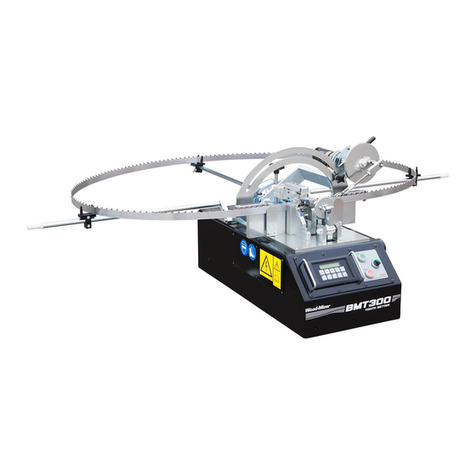
woodmizer
woodmizer BMT300 Safety, Operation, Maintenance & Parts Manual
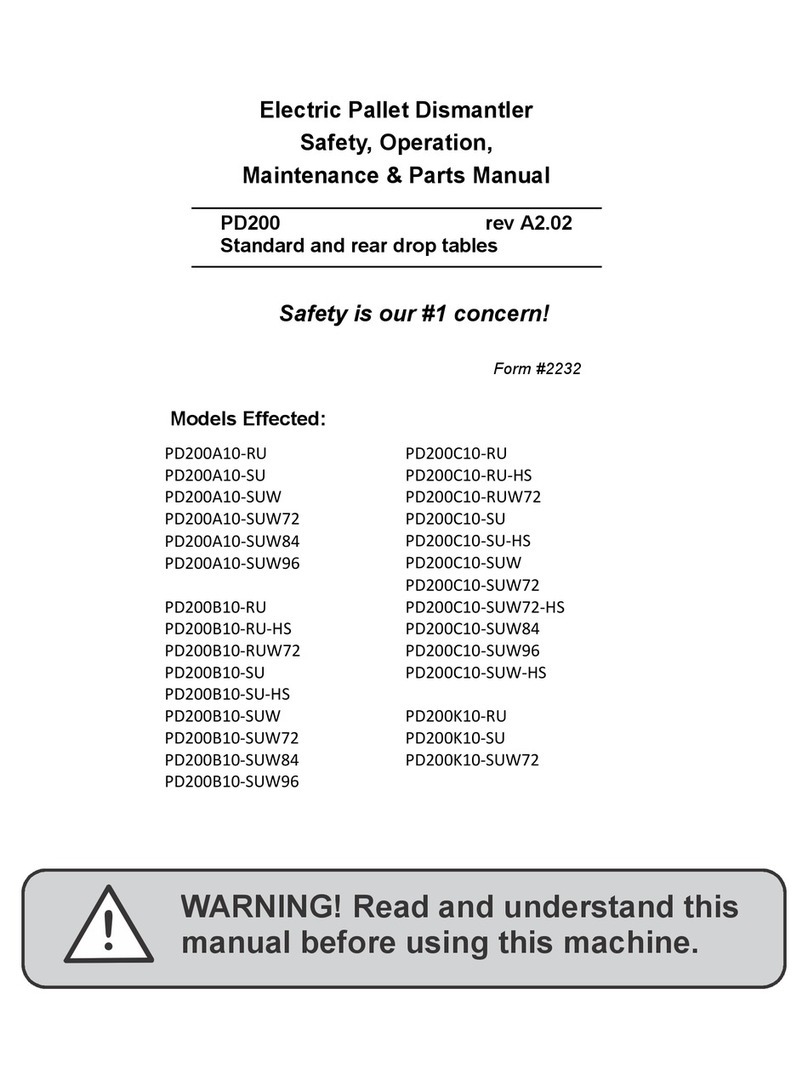
woodmizer
woodmizer PD200 Series Safety, Operation, Maintenance & Parts Manual

GGM gastro
GGM gastro FMH100 Operation manual
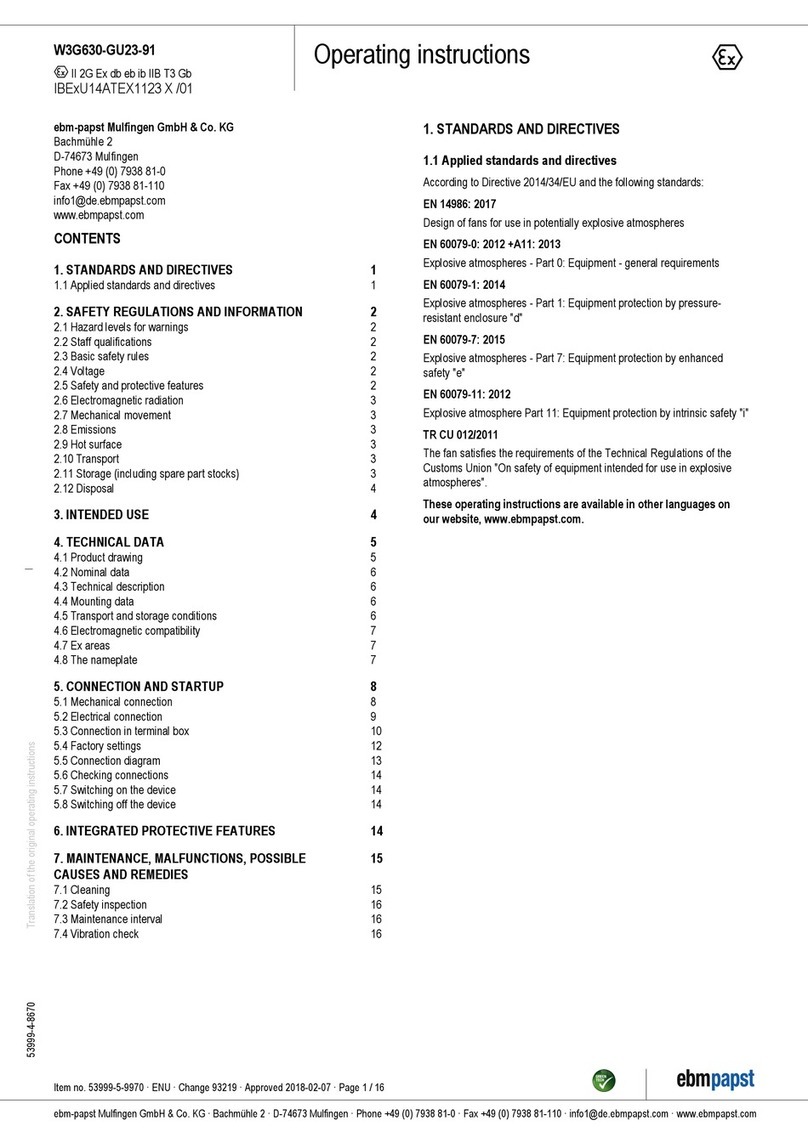
Ebmpapst
Ebmpapst W3G630-GU23-91 operating instructions

DryAIR
DryAIR ES200 Fan-Coil Operator's manual
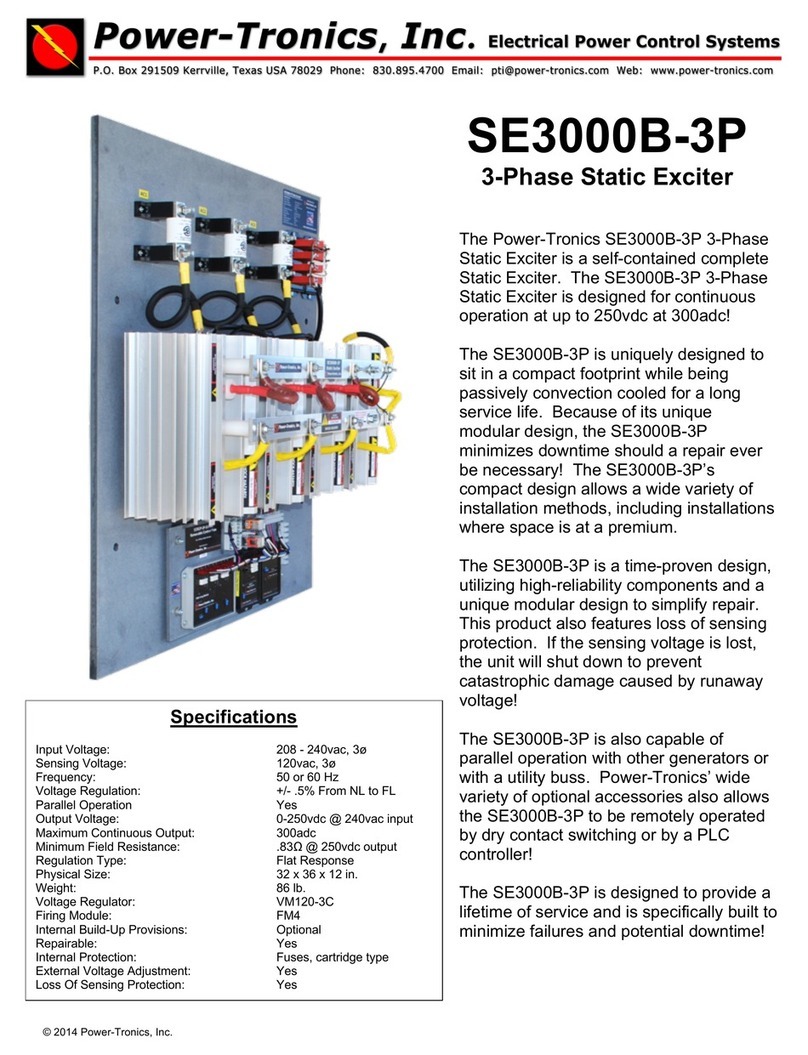
Power-Tronics
Power-Tronics SE3000B-3P manual

Gema
Gema HFF01 Operating instructions and spare parts list
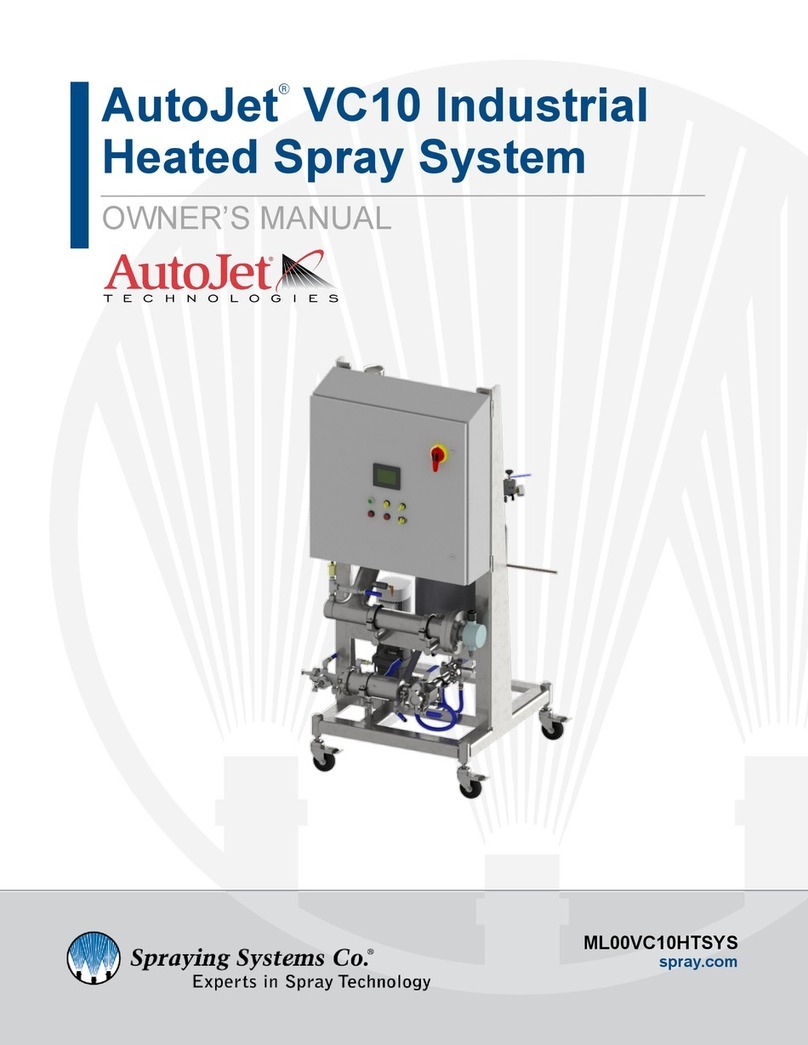
Spraying Systems
Spraying Systems AutoJet VC10 owner's manual
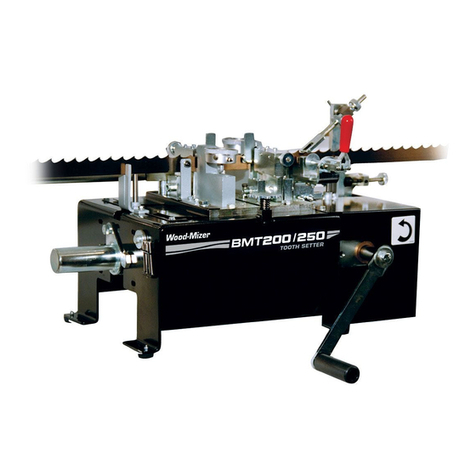
woodmizer
woodmizer BMT200 Safety, Operation, Maintenance & Parts Manual
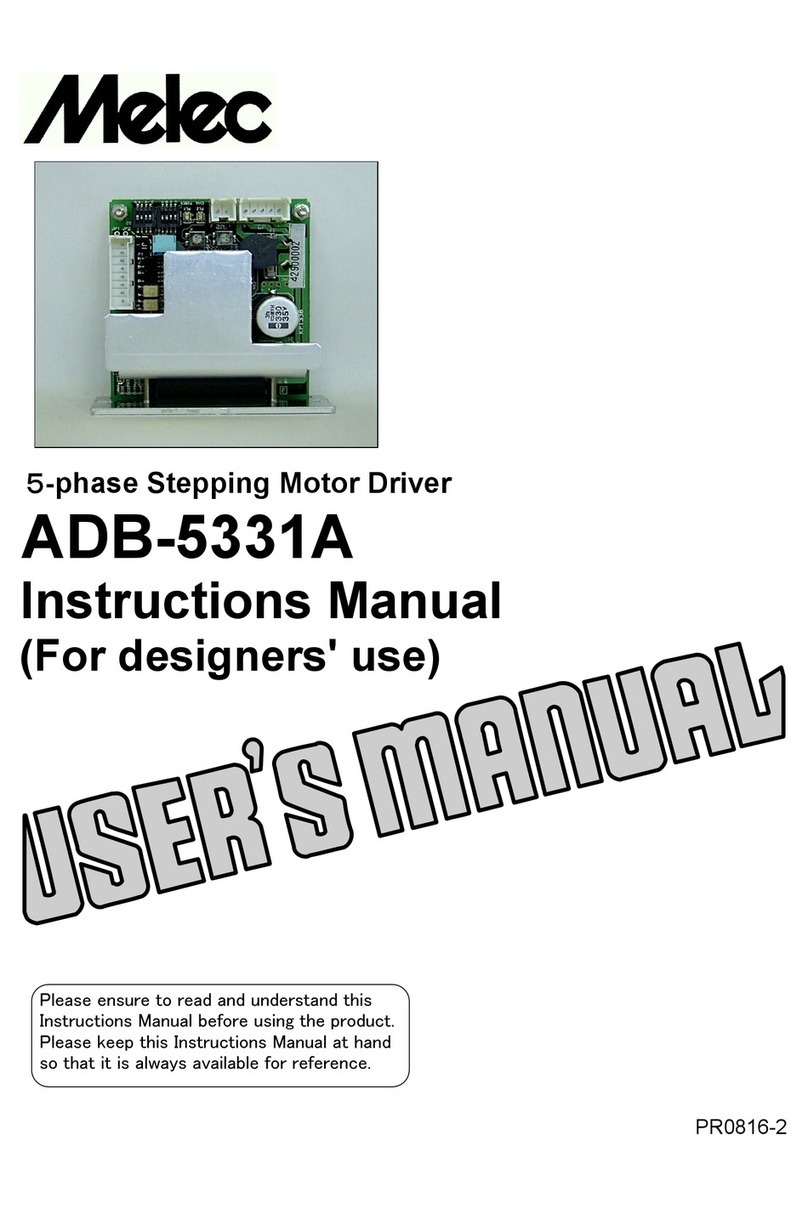
M-Elec
M-Elec ADB-5331A user manual

Linon Home Decor Products
Linon Home Decor Products Powell 16A8213C quick start guide

Alfalaval
Alfalaval T6 instruction manual

